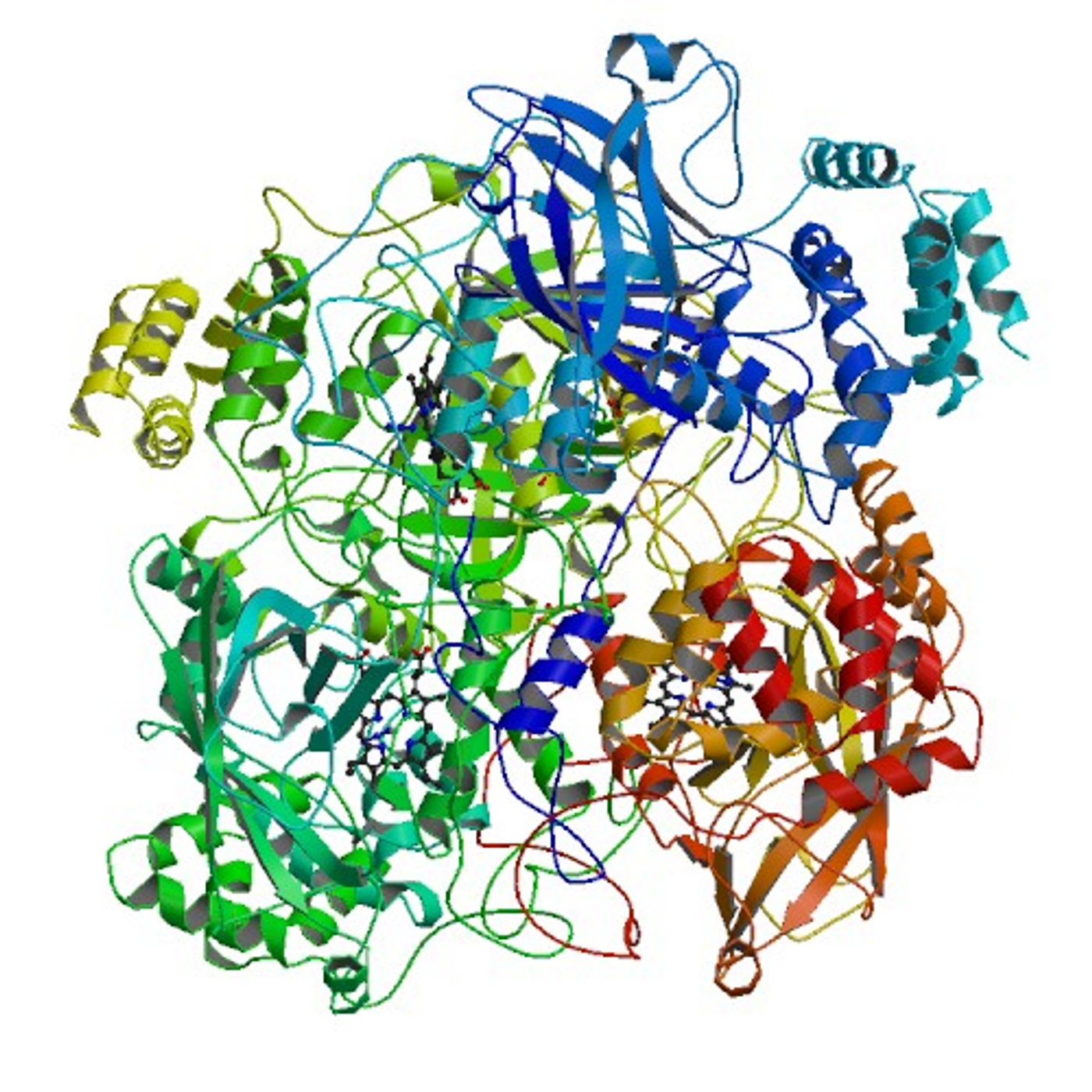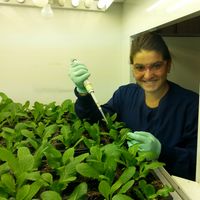The mechanism by which the plant immune system operates is through the detection of conserved microbial components such as flagella. The plant physiological response to biotic stressors (pathogens) can be due to activation of the induced systemic resistance (ISR) or systemic acquired resistance pathway (SAR). The SAR pathway is induced if the pathogen is able to elicit a hypersensitive reaction (HR) which involves the accumulation of reactive oxygen species (ROS), such as hydrogen peroxide (H
2O
2) in the plant in order to rid itself of the infectious agent.
When a plant recognizes a stressor, such as a pathogen, plants will use ROS as signaling molecules and hormone signaling pathways are induced. ROS are produced in different compartments of the plant cell and each compartment can activate different signaling pathways. In general, ROS are removed from cells using scavenger enzymes such as catalase. Catalases detoxify hydrogen peroxide ROS, which is produced during photorespiration and photosynthesis. This makes photosynthesis an important part of the plant cellular redox state and therefore; may help protect plant cells as well as provide adaptation during stress or unfavorable environments.
A recent report in
BMC Genomics describes how scientists used catalase mutant
Arabidopsis thaliana plants to determine their photosynthetic performance and hydrogen peroxide accumulation. Scientists found that several transcription factors and hormone regulators were essential for cell death to occur in the mutants. They were also able to identify a core set of plant cell death regulators.
While plant defense pathways are undoubtedly complex, this research lays the foundation for future study on how hydrogen peroxide is involved in cell death. Plant signaling hormones including salicylic acid, jasmonic acid and auxin all play a critical role in this process. Ultimately this work will help determine better ways plants can be engineered to resist disease.
Sources:
BMC Genomics;
Nature









